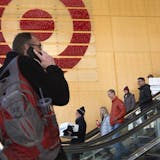In 2018, HOM Furniture invested about $60,000 in an energy-management software solution made by Burnsville-based 75F for HOM's Plymouth store. HOM has saved $50,000 in the first year, nearly recouping its investment and cutting annual energy costs by 21%.
"We want to be good environmental stewards," said John Pierce, real estate director for HOM. "We are happy to see our operating efficiency and lower energy consumption and look forward to seeing what 75F can do in our other facilities."
CEO Deepinder Singh, a computer scientist who launched 75F in 2012, is running a 125-employee company that is doing business in the United States, Singapore, India and other countries with clients seeking to cut energy bills and pollution.
"HOM is a good example because they got an [internal rate of return] of 80 or 90% in the first year," Singh said. "It's good for the environment, for our Minnesota-based business and for HOM. Our customers typically get a two-year payback on their investment."
In September, 75F raised $18 million in venture capital, one of the biggest hauls this year for a Minnesota company, from institutional investors that will enable it to scale up operations to meet global demand.
"We have doubled our employment over the last year and we expect to employ 200 within a year," Singh said. "We just signed a deal with Singapore Power, the state-owned utility, and they will use 75F exclusively as their building-control technology."
"Our goal is to transform building controls," he continued. "We believe the technology we are pioneering one day will be ubiquitous. We are not there yet but we are in the vanguard. There is economic incentive. An environmental incentive. And you can make your people more comfortable and productive. It should be a no-brainer decision."
Meanwhile, HOM is moving forward with installing 75F systems in all 18 of its Upper Midwest locations.



